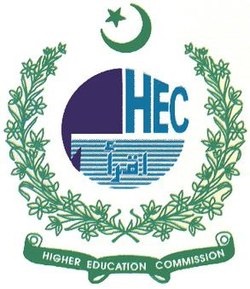Towards A Debt-Overhanged Economy: Causes and Consequences for the Economy of Pakistan
DOI:
https://doi.org/10.61506/01.00340Keywords:
Debt Overhang, Economy, PakistanAbstract
The reliance on debt is not only essential but also a key factor in economic growth of poor countries like Pakistan because of a meager tax base and an annuity of fiscal deficit. Trade surplus is a common tool that covers the budget deficit but twin deficit makes the economic conditions worst. The excessive borrowing can stimulate the economic cycle in the short run but in the in the long-run it creates the issues of debt-overhang. This timely study is an attempt to investigate the short-run and long-run dynamics of debt on the economy of Pakistan. The empirical results (ARDL co-integration) suggests that long-run relationships exist among the variables under consideration such as Exports and Remittances have negative effects on debt, while other variables have positive effects. The Error-Correction-Model (ECM) analysis indicates mean-reverting behavior, where the dependent variable returns to its long-run equilibrium. Post-estimation tests support the model's assumptions. The Jarque–Bera test shows that residuals exhibit normal distribution. CUSUM and CUSUMsq tests indicate reliability and stability of the regression model. There is a long-run relationship between exports of goods and services (EGS), imports of goods and services (IGS), gross fixed capital formation (GFCF), net official development assistance (NOD), personal remittances (PRR), and debt in Pakistan. In the long-run, Exports of goods and services have a negative impact, Imports of goods and services have a significantly positive impact, Gross fixed capital formation has a positive impact, Net official development assistance has a positive impact, Personal remittances have a negative impact on debt respectively. However, Trade as a percentage of GDP has an insignificant impact on debt in the long run. The study also found that the impact of each variable on Debt is different in the short run. Overall, the study provides valuable insights into the factors that affect Debt in Pakistan.
References
Afonso, A., & Hauptmeier, S. (2009). Public Debt and Economic Growth: a Granger Causality Panel Data Approach (No. 2009/24). ISEG-School of Economics and Management, Department of Economics, University of Lisbon.
Ahmed, N., Issani, M., Mahar, S. A., & ul Mustafa, A. R. (2020). Social Media and Social Entrepreneurship: Two Brothers on Same Mission. International Journal of Management (IJM), 11(12). DOI: https://doi.org/10.34218/IJM.11.12.2020.196
Al-Refai, M. F. (2015). Debt and Economic Growth in Developing Countries: Jordan as a Case Study. International Journal of Economics and Finance, 7(3), 134. DOI: https://doi.org/10.5539/ijef.v7n3p134
Balassone, F., Francese, M., and Pace, A. (2013). Public Debt and Economic Growth: Italy’s First 150 Years. The Oxford Handbook of the Italian Economy since Unification”, OUP. DOI: https://doi.org/10.1093/oxfordhb/9780199936694.013.0018
Barro, R. J. (1979). On the determination of the public debt. Journal of political Economy, 87(5, Part 1), 940-971. DOI: https://doi.org/10.1086/260807
Bilan, I., and Ihnatov, I. (2015). Public debt and economic growth: a two-sided story. International Journal of Economic Sciences, 4(2), 24-39. DOI: https://doi.org/10.20472/ES.2015.4.2.003
Calderón, C., & Fuentes, J. R. (2013). Government debt and economic growth (No. IDB-WP-424). IDB Working Paper Series. DOI: https://doi.org/10.18235/0011505
Checherita-Westphal, C., and Rother, P. (2012). The impact of high government debt on economic growth and its channels: An empirical investigation for the euro area. European Economic Review, 56(7), 1392-1405. DOI: https://doi.org/10.1016/j.euroecorev.2012.06.007
Cordella, T., Ricci, L. A., & Ruiz-Arranz, M. (2010). Debt overhang or debt irrelevance? IMF Staff Papers, 57(1), 1-24. DOI: https://doi.org/10.1057/imfsp.2009.20
Ferreira, M. C. (2009). Public debt and economic growth: a Granger causality panel data approach. Working papers No. WP 24/2009/DE/UECE.
Greiner, A., and Fincke, B. (2009). Public debt and economic growth (Vol. 11). Springer Science & Business Media. DOI: https://doi.org/10.1007/978-3-642-01745-2
Herndon, T., Ash, M., and Pollin, R. (2014). Does high public debt consistently stifle economic growth? A critique of Reinhart and Rogoff. Cambridge journal of economics, 38(2), 257-279. DOI: https://doi.org/10.1093/cje/bet075
Hussain, T., MUSTAFA, A. R. U., Makhdum, M. I., & Ullah, K. (2022). Defense Expenditures, Fiscal Deficit And Debt Servicing Nexus: A Case Study Of Pakistan. Bulletin of Business and Economics (BBE), 11(2), 74-83.
Khan, A. A., Inam, S. G., & Ghaffar, A. (2020). Impact Of Foreign Direct Investment On Export Of Primary Sector: Evidence From Pakistan. Journal of Business Strategies, 14(2), 104.
Krugman, P. (1988). Financing vs. forgiving a debt overhang. Journal of development Economics, 29(3), 253-268. DOI: https://doi.org/10.1016/0304-3878(88)90044-2
Mujahid, H., Khan, A. A., & Ghaffar, A. Nexus Between Remittances, Corruption And Poverty: A Case Of Pakistan.
Owusu‐Nantwi, V., and Erickson, C. (2016). Public Debt and Economic Growth in Ghana. African Development Review, 28(1), 116-126. DOI: https://doi.org/10.1111/1467-8268.12174
Pakistan Economic Survey 2022-23. Source: www.finance.gov.pk (accessed on 1st January 2024).
Panizza, U., & Presbitero, A. F. (2014). Public debt and economic growth: is there a causal effect?. Journal of Macroeconomics, 41, 21-41. DOI: https://doi.org/10.1016/j.jmacro.2014.03.009
Pattillo, C. A., Poirson, H., & Ricci, L. A. (2002). External Debt and Growth. IMF Working Papers, 2002(069). DOI: https://doi.org/10.2139/ssrn.879569
Reinhart, C. M., and Rogoff, K. S. (2010). Growth in a Time of Debt (No. w15639). National Bureau of Economic Research. DOI: https://doi.org/10.3386/w15639
Schclarek, A. (2004). Debt and economic growth in developing and industrial countries. Lund University Department of Economics Working Paper, 2005, 34.
ul Mustafa, A. R., Abro, A. A., Hussain, T., & Ali, S. R. (2021). Populism, seigniorage and inequality dilemma in perspective of Pakistan. Academy of Accounting and Financial Studies Journal, 25, 1-14.
ul Mustafa, A. R., Nishat, M., & Abro, A. A. (2022). Social protection spending in context of structural and institutional performance: A global empirical analysis. Social Indicators Research, 163(2), 875-899. DOI: https://doi.org/10.1007/s11205-022-02933-6


